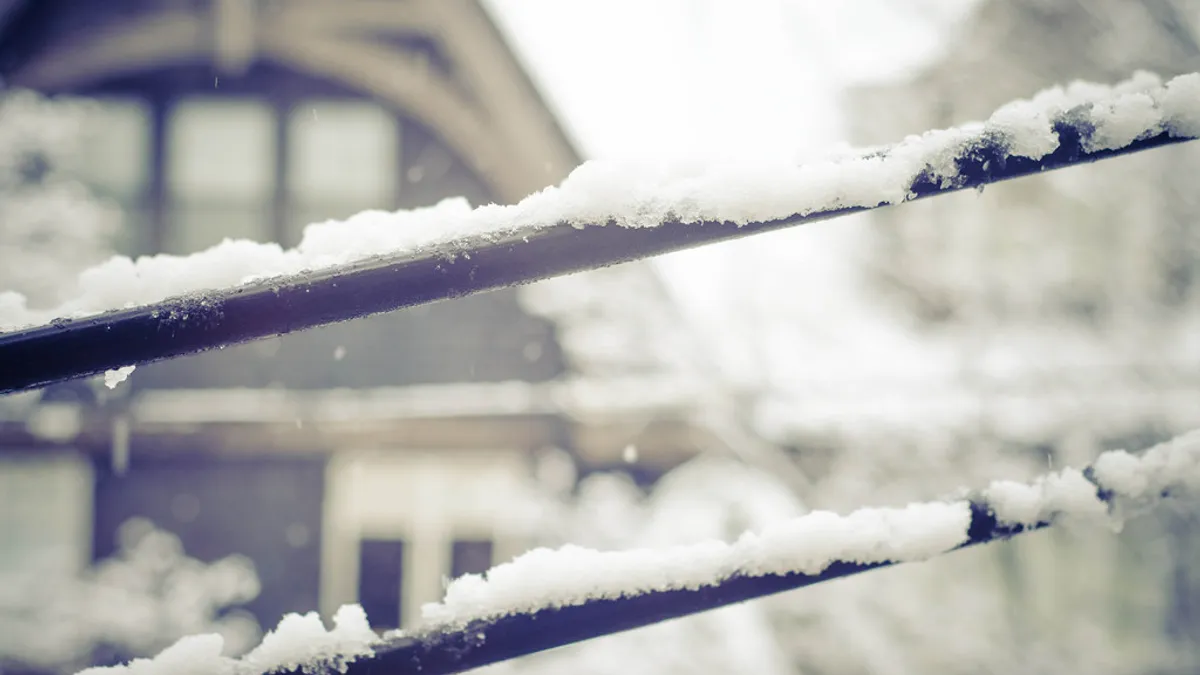Just as most electronics will shut down in the face of water or fire, many also don’t work optimally in extreme weather — especially frigid cold. Technology's weather limitations came to the forefront earlier this year when the polar vortex plunged much of the country into a deep freeze, and another round just started as Midwest, Northeast and Mid-Atlantic states deal with frigid temperatures that are well below average.
When temperatures dip, tech advisers frequently offer users tips for keeping devices functioning properly — not to mention Apple’s suggestion that iPhones are meant to operate at temperatures above 32 degrees. Cold weather can weaken the integrity of device materials and cause them to shatter more easily, but more commonly addressed problems are unresponsiveness, shortened battery life and charging trouble.
Similarly, electric-battery vehicles are known to not run as long or as far on one charge when operating in cold temperatures. Many EV manufacturers are working on cold weather improvements including battery heaters and cabin heaters that don't suck battery power at such an excessive rate. These EV issues have prompted municipalities in colder climates to take extra precautions when adding electric transportation options, such as the electric bus pilot in Anchorage, AK. Metro Transit in the Twin Cities recently told Smart Cities Dive that it aims to keep its light rail train batteries above 40 degrees for optimal performance.
So how do these cold weather challenges for individual electric devices scale to all the smart technologies within a city? It turns out weather is now a primary consideration when designing and implementing cities' technologies.
"It's built into the sauce when they design [smart city infrastructure]," said Bob Bennett, Kansas City, MO Chief Innovation Officer. "When we issue RFPs for equipment, that amount of climate resilience is built into our selection criteria."
Prime elements of Kansas City's smart infrastructure — including Wi-Fi access points, 25 interactive kiosks and nearly 200 light pole-mounted sensors — have been in place since May 2016 and "to this point in time we have not had any weather-related fails," Bennett said. "In Kansas City, we’re going to get all four seasons in one day, so anyone who works in this space has to be cognizant of what those challenges look like."
Bennett credits Internet of Things (IoT) company Smart City Media with devising a resilient system that could withstand the city's temperature swings. "The ability of these machines to withstand that variance I think is almost more impressive than their ability to handle extreme heat or extreme cold," Bennett said.
"In Kansas City, we’re going to get all four seasons in one day, so anyone who works in this space has to be cognizant of what those challenges look like."

Bob Bennett
Chief Innovation Officer, Kansas City, MO
The interactive kiosks, for example, are sealed so they are waterproof and dustproof, and "the structures themselves are completely HVAC equipped," said Smart City Media CEO and President Tom Touchet. "The internals are cool in the summer and warm in the winter, so they’re going to keep chugging along." The screen is also under layers of protective material, although "when it’s super super cold nobody wants to touch anything," he said.
People's hesitance to use kiosks in cold weather is why all of the information that they provide is also accessible via a mobile app, creating redundancy so users "can take that [mobile device] to somewhere that’s a little more sheltered from the extremes" to get the same information, Touchet said. "That’s super important because ... we have to be able to provide that information to the citizens so the rest of the smart cities infrastructure has the value grow out of it."
Chicago is another city where cold weather considerations are at the forefront of smart infrastructure planning. Its public-private Array of Things (AoT) project uses cameras and sensors installed throughout the city to collect data on various urban livability elements like air quality, noise pollution and traffic, as well as climate conditions such as air and surface temperature and barometric pressure.
"The structural improvements on all of that hardware over the past five years have been tremendous."

Tom Touchet
President and CEO, Smart City Media
Like Kansas City's sensors, those in Chicago are encased to protect them from the cold. "The AoT nodes have computers inside, so they will keep themselves toasty warm even in the coldest weather, because computers generate a lot of heat," said Kate Kusiak Galvin, executive director of the Urban Center for Computation and Data.
But not all sensors function in the same way. Chicago is "using some electrochemical sensors that might be affected by extreme cold, and measuring such effects is part of the AoT research agenda," Kusiak Galvin said.
Plus, certain sensors — such as those that monitor barometric pressure — can be affected "if they accumulate ice particles," she said. "All AoT sensors are within a specially designed shield that prevents direct contact from precipitation or sunlight. However, in some conditions it is possible that ice particles could be blown into the shield... [and] we would see clearly that the measurements are in error, as the impact would be quite significant, not subtle."
Device protections from weather are being thought about more now than during the advent of the technologies not just because a growing number of cities are using smart systems, but also because of the predictions of more extreme temperatures brought on by climate change. Cities are similarly beefing up infrastructure plans for increased resilience in the face of more frequent, intense storms, also said to be worsened by climate change.
Weather protections are now viewed as an integral part of creating an efficient, well-functioning smart city infrastructure.
"The structural improvements on all of that hardware over the past five years have been tremendous," said Touchet. Accommodations for temperature swings are "where the greatest advances have been made, I think."




















